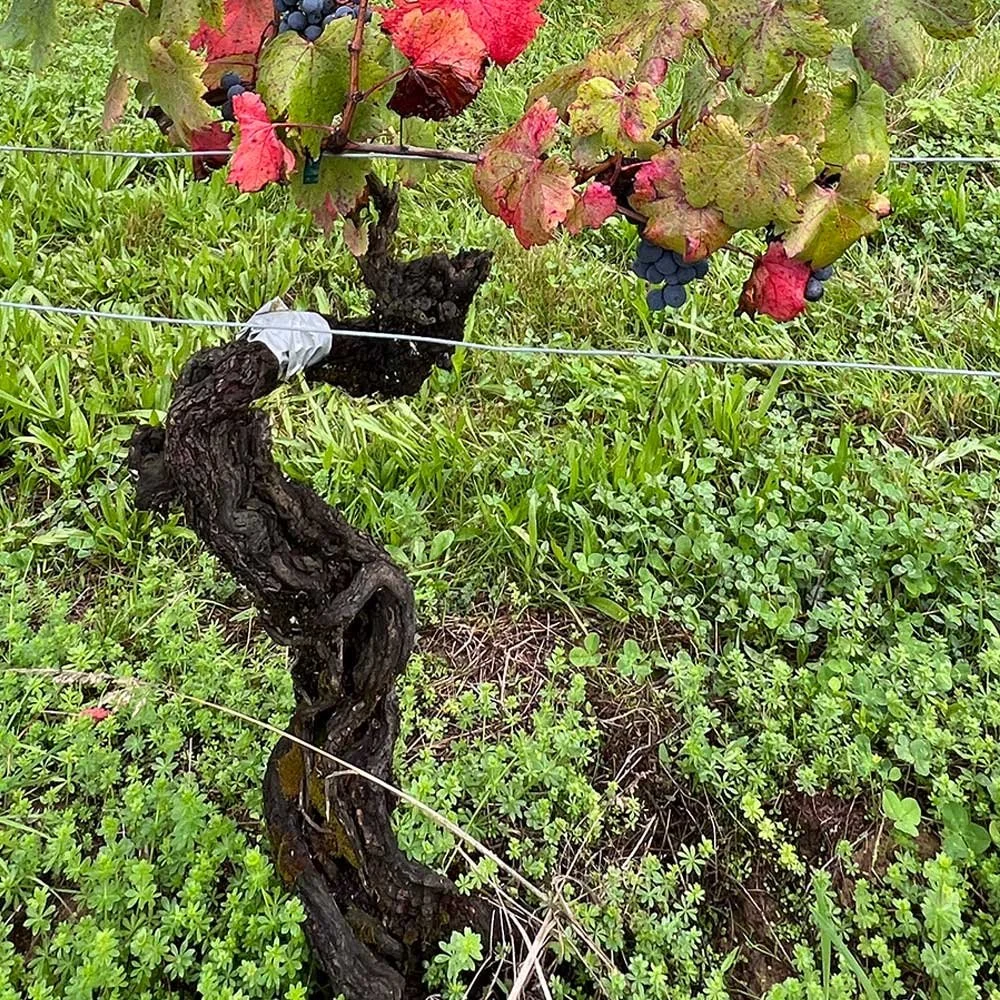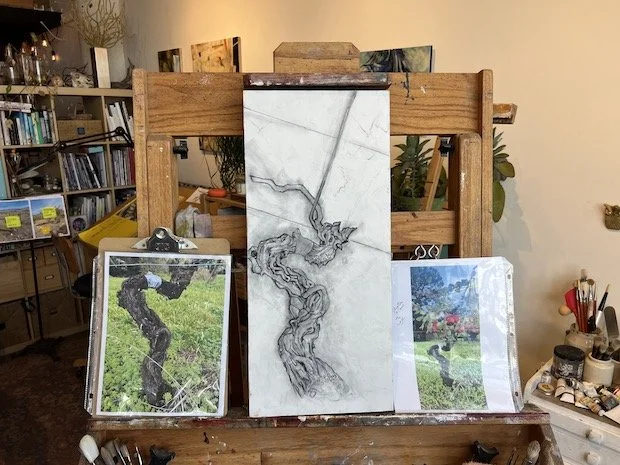A Record of Persistence
The old Bouchalès vine in Bordeaux, September 2024.
With an age of 120 years, think of everything this vine has seen and experienced.
Last fall in Bordeaux, I found an old vine that stopped me in my tracks. It wasn’t the most dramatic in the vineyard, nor was it the gnarliest or the most laden with fruit. But there was something in its shape, its stance, that felt deeply human. Twisted, weathered, stubbornly reaching. I photographed it from every angle, trying to memorize the way its arms held the last clusters of grapes and how its leaves, tinged scarlet and gold, fluttered like old paper in the wind.
That vine was a Bouchalès (boo-shah-LAY) a rare and ancient varietal that most people have never heard of. This particular vine is over 120 years old and part of a row that somehow survived the phylloxera epidemic that devastated nearly all of Europe’s vineyards in the 19th century. It is located at Château La Corne, a quiet and soulful place tucked into the Bordeaux landscape. It’s a survivor in every sense, a living thread back through time.
I knew then I wanted to paint it. Not just a vine, but that vine. A portrait, not of a person, but of a life rooted in place bearing the weight of time and harvests. As I carefully wrote notes and took photos, I kept thinking about the endurance of this vine- not just its physical survival, but the dignity it seemed to carry. The way its trunk twisted and reached, as if it had weathered everything from frost to fire and still chose to grow. It wasn’t just a plant; it felt like a presence. There was grace in its crookedness, a kind of poetry in its perseverance. Back in the studio, I started working from those photographs, letting memory and imagination blur the lines. The vine became a kind of character, full of gesture and history.
And then, this spring, I went back.
The vineyard looked completely different, soft and green and humming with bees. But I found it—my vine—still there, just beginning to sprout. Tiny buds pushing through the wood like whispered promises. I recognized the curve of its trunk, the quiet drama of its limbs. Seeing it in spring, after knowing it first in autumn, was like meeting someone twice- once in a moment of letting go, and once in a moment of becoming.
It struck me how much the vine had changed, and yet stayed the same. I started to wonder how many people had walked past it without noticing. How many hands had pruned it, how many seasons it had stood through. Who had originally planted it? There was something sacred in that obscurity, in the quiet nobility of a vine that had never been famous, but had never given up. It reminded me of the people in our lives who hold things together quietly, without fanfare.
The same Bouchalès vine the following April. Fresh growth, a new cane and crisp baby leaves. A vine continually reminds us that the ability to let go is essential for growth.
There’s a reason the vine has always been such a powerful symbol across cultures; it's not just about abundance or celebration. It’s about what it means to grow in place, to live in relationship with the land, to endure season after season of uncertainty. Old vines, especially, carry this quiet wisdom. They don’t rush. They know drought and frost. They’ve lived through years of too much rain and years of not enough. And still, they send out shoots. Still, they offer what they can.
In them, I see echoes of our own lives. How we weather loss, how we adapt, how we carry memory in the body. Just as a vine’s form is shaped by years of pruning, wind, and weight, our lives are shaped by constraint, care, and circumstance. The curves and knots of an old vine are not flaws, they are the record of its persistence. There is something deeply moving about that, especially in a culture that often values only the new, the smooth, the immediately fruitful.
We rarely celebrate aging in its raw, exposed beauty. But in the vineyard, old vines are prized not for their appearance but for the depth and complexity they bring, nuance forged over decades. They produce less but what they yield is more concentrated, more expressive. There is a lesson in that. We don’t have to keep producing at the same pace forever. We don’t have to smooth out our gnarled places. Sometimes, what we’ve lived through is the very thing that gives our contribution its richness.
These moments are what my art is all about. I’m not just interested in vines as symbols, I want to know them as individuals. I want to draw them not as parts of a landscape, but as characters, each with their own posture, memory, and weight. The old vines in particular have become a focus of my work. They speak to something essential about resilience, about time, about what remains when so much has changed.
The painting in progress in the studio. My recent re-visit will undoubtedly change the work from these original ideas. I’m excited to see where it wants to go!
As I visit wine regions and vineyards across the globe, vines like these are my priority. I seek out the elders, the overlooked, the ones with stories written into their bark. They have become muses in a way I didn’t expect. Encountering that vine in Bordeaux reminded me that time is not just something we pass through, it’s something that passes through us. It leaves its mark, but it also leaves its gifts. And when we slow down enough to really see, we begin to notice the beauty in those marks, the lines, the layers, the lean of a life that has kept reaching for light.
And maybe that’s what this painting is going to be about. Not just a study of form or season, but the continuity of spirit. The way life pulses through us, quietly, regardless of where we are in the cycle. The portrait isn’t finished yet. I’m still working, still listening to what it wants to be. But now it holds both autumn and spring- memory and renewal. Just like the vine.


